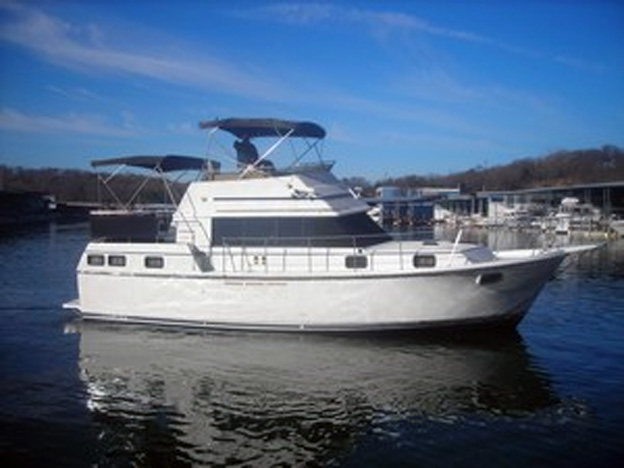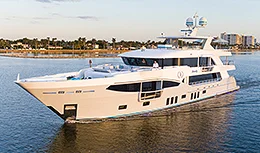- Alaskan Yachts
- Azimut Yachts
- Back Cove Yachts
- Beneteau Yachts
- Benetti Superyachts
- Bertram Yachts
- Boston Whaler
- Broward Yachts
- Buddy Davis Sportfish
- Burger Yachts
- Cabo Yachts
- Catamarans
- Carver Motoryachts
- Center Console
- Chris-Craft Yachts
- Cruisers Yachts
- DeFever Trawlers
- Dufour Sailboats
- Fairline Yachts
- Feadship Yachts
- Ferretti Yachts
- Formula Yachts
- Fountaine Pajot Cats
- Grady-White
- Grand Banks Trawlers
- Hargrave Yachts
- Hatteras Yachts
- Hinckley Picnic Boats
- Horizon Yachts
- Hydra-Sports
- Intrepid Boats
- Jarrett Bay Sportfish
- Jeanneau Yachts
- Kadey-Krogen Trawlers
- Lazzara Yachts
- Lekker Boats
- Luhrs Sportfish
- Marlow Yachts
- Maritimo Yachts
- Marquis Yachts
- Mazu Yachts
- McKinna Motoryachts
- Meridian Yachts
- Midnight Express
- MJM Yachts
- Mochi Craft
- Neptunus Motoryachts
- Nordhavn Trawlers
- Nordic Tugs
- Numarine Yachts
- Ocean Alexander Yachts
- Ocean King
- Offshore Yachts
- Outer Reef
- Oyster Sailing Yachts
- Pacific Mariner Yachts
- Palmer Johnson Yachts
36 Carver Aft Cabin
![]()
 Source: Peter Bohr, Sea Magazine
Source: Peter Bohr, Sea Magazine
Going in Style
Traditionally, designers at Carver Boat Corporation in Pulaski, Wisconsin have taken a rather conservative approach to exterior styling. While the boats always have been favorites of buyers seeking value, high-quality construction and clever space utilization, they weren’t necessarily coveted by those seeking head-turning flair.
Well, stop the presses. Something wonderful is going on in Pulaski. Carver’s new-for-1990 36 foot Aft Cabin is as handsome a motoryacht as offered by any boat builder. In fact, the boat looks even better in person than it does in brochure photos. It’s the little sister of Carver’s trio of aft cabin beauties that includes the 38 and 42 motoryachts.
In the style department, the new 36 is leagues ahead of the older, somewhat dowdy-looking 36 Aft Cabin that was introduced in 1982. The older model’s claim to fame was roomy accommodations, well-suited to the needs of a family. The new 36 is still accommodating, but now has even more room – it’s only a couple of inches longer, but nearly a foot and a half wider. Best of all, this additional beam was factored into the design without creating a boxy look.
One of the first 1990 36 Aft Cabins to come out of the factory was delivered to Ron Richardson, owner of Newport Yacht Exchange in Newport Beach, California. It was there that we took a close look at the boat while it was at the dock having electronics installed for its new owner.
Because of the raised aft deck, boarding the boat is more challenging than stepping into the cockpit of a convertible sedan. From the dock, we first stepped onto a wide swim step, but then had to negotiate a near-vertical ladder of a half-dozen rungs – which could be difficult to do with arms full of gear or groceries.
But once we made it up to the spacious deck, the benefit of the arrangement was obvious. The bridge deck is only a couple steps up from the aft deck, and the two areas seem to blend together into one huge convertible sedan.
Seating is plentiful. There’s room for two next to the helmsman, and for three or four in front of the helm console. The console itself is outstanding, with space enough to flush-mount enough electronic goodies to navigate the QE II. The entire panel in front of the console is removable too, for complete access to the backsides of the instruments.
In the lower helm station, Carver has cleverly recessed the instruments into the console, and covered them with a flush-fitting hatch that swings on a piano hinge. With the hatch up, you get a clear view of the instruments. But with it down, the area atop the console becomes a handy counter for books, glasses, hors d’oeuvres or whatever.
The 36’s interior consists of four compartments: forward and aft staterooms, separated by the main saloon and galley/dining area.
A U-shaped dinette is to port and the nearly U-shaped galley is to starboard. The galley comes standard with a Princess three-burner stove and oven, a Norcold double-door refrigerator-freezer, and a truly handsome, deep stainless steel sink. The countertops are covered with laminate, nicely finished with teak sea rails.
The decor in the saloon and much of the rest of the boat consists mostly of high-quality vinyl and laminate, with nylon carpeting and cotton drapes. Though there isn’t much woodwork inside, what joinery there is appears to be first rate. For those who like high gloss, the teak trim could be made stunning with four or five coats of varnish.
The forward stateroom has a double berth, good-sized hanging locker and adjoining head compartment with a hand-held shower head. The aft stateroom, however, is clearly the 36 Aft Cabin’s pièce de résistance. It’s extremely spacious, with an adjoining head compartment containing a separate stall shower. The island bed is large, and plenty of windows – including one in the transom – make the cabin bright and well ventilated.
It’s clear Carver put enormous thought into making nearly every part of the 36 Aft Cabin easily accessible. The side panels around the saloon are removable, giving access to wiring or any equipment that an owner might want mounted inside. The dockside power receptacle is easily reached through a removable panel in the aft stateroom head compartment. The water tank and hot water heater are mounted under the platform-bed cushion in the aft stateroom. Remove the seat cushions on either side of the bed, and you have complete access to the steering gear.
Such accessibility translates into a positive safety factor if something should happen to break down at sea, and should result in lower labor bills in the boat yard.
In the well-lighted engine room, the bilges are gelcoated, with hardly any rough edges. The massive, hollow (to save weight) fiberglass stringers are easy to spot. There’s ample room to work around both sides of both engines, as well as the generator mounted in between. The hoses are all double-clamped, and a bank of three batteries (one for the generator) is mounted high enough to preclude submersion in all but the most dire circumstances.
The hatch covers are backed by a frame of aluminum box beams, and a grid of aluminum beams supports the sole of the saloon. Wood is absent under the cabin sole, which eliminates any possibility of structural deterioration.
Carver now uses an abundance of aluminum instead of wood for structural supports, both because of its strength and lightweight qualities. Engine mounts are 3/8 inch welded aluminum brackets, secured to the sides of the supporting stringers with bolts. Thick aluminum backing plates are laminated into the deck beneath hardware like stanchions and cleats. The rudder posts are mounted through a six-inch aluminum beam.
You won’t find a lot of waves along the surface of the Carver’s hull. The gelcoat is thick – 22 mils above the water and 28 mils below, to be exact. The modified-V hull with 19 degrees of deadrise at the transom is made up of 24 ounce woven roving, overlapped at the chines and transom for strength. Two solid strakes running along the bottom and placed well outboard deflect spray.
The Carver 36, equipped with twin 454 Crusader gasoline engines (each develops 308 hp at 4,400 rpm), is purported to top out at nearly 31 mph while consuming 49 gallons of gasoline per hour. At a cruising speed of 3,200 rpm, the boat will do 17 mph while burning about 22 gph. With twin 300 Cummins diesels (300 hp each, at 2,800 rpm), the boat is expected to top out at better than 28 mph while burning 25 gph. Cruising at 2,600 rpm with the diesels, you should get 20 gph at 25 mph.



